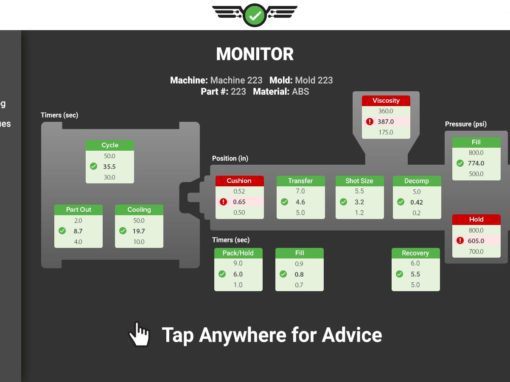- Why RJG?
-
-
- Nach BedarfEntdecken Sie, wie wir Lösungen für diese häufigen Anforderungen finden.
- Nach BrancheEntdecken Sie, wie wir in drei der größten Branchen, für die wir tätig sind, einen bedeutenden Beitrag leisten..
- ReferenzenErfahren Sie aus erster Hand, wie RJG einen Unterschied macht – echte Geschichten von Erfolg, Transformation und Wirkung.
-
-
- RJG Solutions Suite
-
-
- ÜbersichtEntdecken Sie unser komplettes Angebot an Spritzgießlösungen.
- SchulungSpritzgießschulungen verbessern die Qualität, senken die Kosten und erhöhen die Arbeitsmoral.
- TechnologieVerschaffen Sie sich einen Wettbewerbsvorteil mit der neuesten Technologie der Branche.
- ConsultingLösen Sie Ihre Problemstellungen oder beschleunigen Sie Ihre Markteinführung
-
-
- SUPPORT
- RJG AKADEMIE
-
-
- RJG AkademieEntdecken Sie die passenden Seminare für sich und melden Sie sich online an.
- Melden Sie sich für öffentliche Kurse anMelden Sie sich für eine persönliche Spritzgießschulung in einer unserer weltweiten Niederlassungen an.
- Online Schulungen SpritzgießenLernen Sie in Ihrem eigenen Tempo mit eLearning oder mit einem von unseren erfahrenen Kursleitern durchgeführten Online-Kursen.
- Seminare bei Ihnen vor OrtSeminare bei Ihnen vor Ort
-
-
-
- INFO CENTER
-
-
- Knowledge BaseFinden Sie Antworten auf häufig gestellte Fragen zu RJG
- Art’s TippsArt Schubert war von 1989 bis 2016 Chefingenieur bei RJG und hat sich verpflichtet, sein umfangreiches Wissen mit anderen zu teilen und Spritzgießern zu helfen, häufige Schwierigkeiten zu vermeiden.
- RundschreibenErhalten Sie die neuesten Nachrichten und Informationen von RJG.
-
- ÜBER RJG
-
-
- ÜberErfahren Sie mehr über uns, wer wir sind, was wir bieten und was uns antreibt
- LeadershipLernen Sie unsere Führungskräfte kennen.
- Consulting Trainer und ExpertenLernen Sie unsere erfahrenen Trainer, Berater und Experten kennen.
- ReferenzenErfahren Sie, was unsere Kunden über die Zusammenarbeit mit uns zu berichten haben.
- PartnerLernen Sie unsere starken Partner kennen.
- Mold Smart AwardBewerben Sie sich für unseren ährlichen RJG Mold Smart Award.
- EventsSehen Sie sich unsere bevorstehenden Veranstaltungen an
- KarriereWir stellen ein! Sehen Sie sich unsere offenen Stellen an.
-
-

